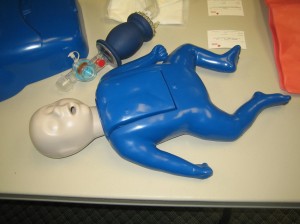
CPR training is a popular training program in Hawaii and all over the US, with one person dying from cardiac disease every 33 seconds in the country. There are many providers today that offer the best CPR programs, but none better than us at Honolulu CPR. We have high quality programs available at very affordable rates, and all through the week as well. We only allow certified rescuers to teach our classes, so our trainees receive the best training possible.
Heart attacks
Each year, more than 400 million dollars are spent in the management of cardiovascular disease. Out of the population, over 7.9 million living Americans have experienced at least 1 heart attack. More than half a million Americans die from heart attacks each year, a statistic that is quite alarming because heart attacks typically have a myriad of symptoms, sometimes even months before the attack, that signify that the victim has a pre-existing cardiac problem. Chest pain is one of the major symptoms of a heart problem.
The medical term for chest pain is angina. Angina is caused by a decreased flow of blood to the heart, depriving the heart muscle of needed oxygen. The lack of oxygen causes the heart muscle to die, therby causing pain. People rarely get immediate medical attention when they first feel “twinges” of cardiac pain. It is only when the pain becomes unbearable and unmanagable that they seek medical help – a very late decision that often leads to death. In the US, over 8.9 million Americans have a history of chest pain.
Managing cardiac arrest
When the heart goes into cardiac arrest, it stops beating. This is very dangerous because oxygenated blood cannot reach the rest of the body. If oxygen cannot reach the tissues, the organs start to malfunction and fail. Through the use of CPR, the compressions manually get the heart beating and the circulation of blood is temporarily returned. Ventilations through rescue breaths (either mouth-to-mouth or bag valve mask) oxygenate the blood. The compression-ventilation ratio used in both adult and pediatric victims is 30:2.
Defibrillation, if an AED is available, is done to help restore the normal rhythm of the heart. It is not done when the victim is experiencing asystole (flatline), unlike what you see in most movies and TV shows. Electricity is sent from the machine, through the pads placed on the chest, and travels to the heart.
Honolulu CPR classes
Basic Life Support covers all the basics: compression, ventilation, and defibrillation. We have one BLS course available to the public, while all other courses (including all Advanced Life Support courses) are for healthcare providers. Classes range from 4 hours to 16 hours long, with advanced courses taking two days to complete.
- Basic CPR/AED for the general public – 4 hrs.
- Basic CPR/AED – 4.5 hrs.
- Basic Life Support for HCPs – 4.5 hrs. (re-certification – 4 hrs.)
- Advanced Cardiac Life Support (ACLS) – 16 hrs. (re-certification – 5 – 6 hrs.)
- Pediatric Advanced Life Support – 14 hrs. (re-certification – 6 – 8 hrs.)
